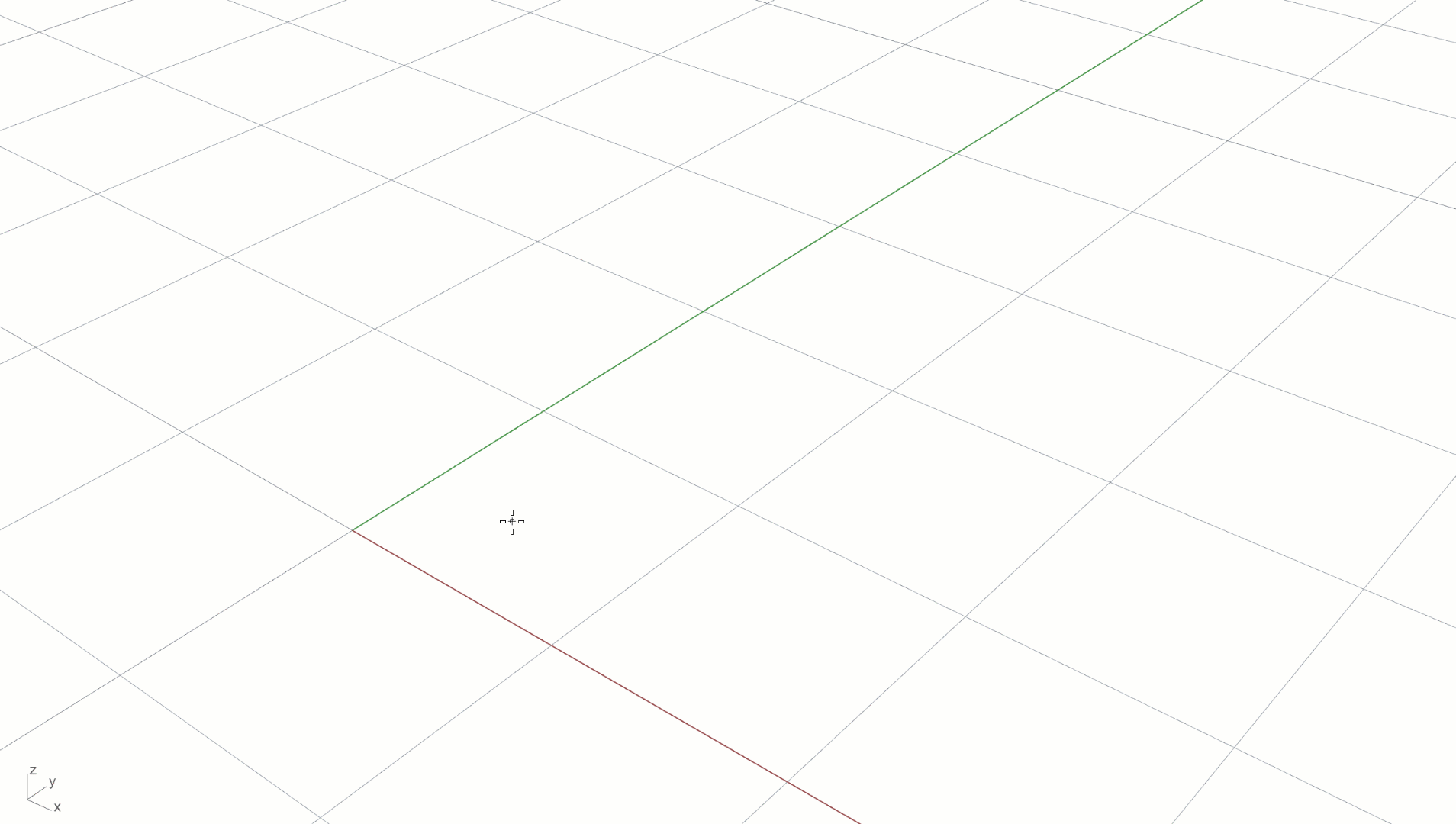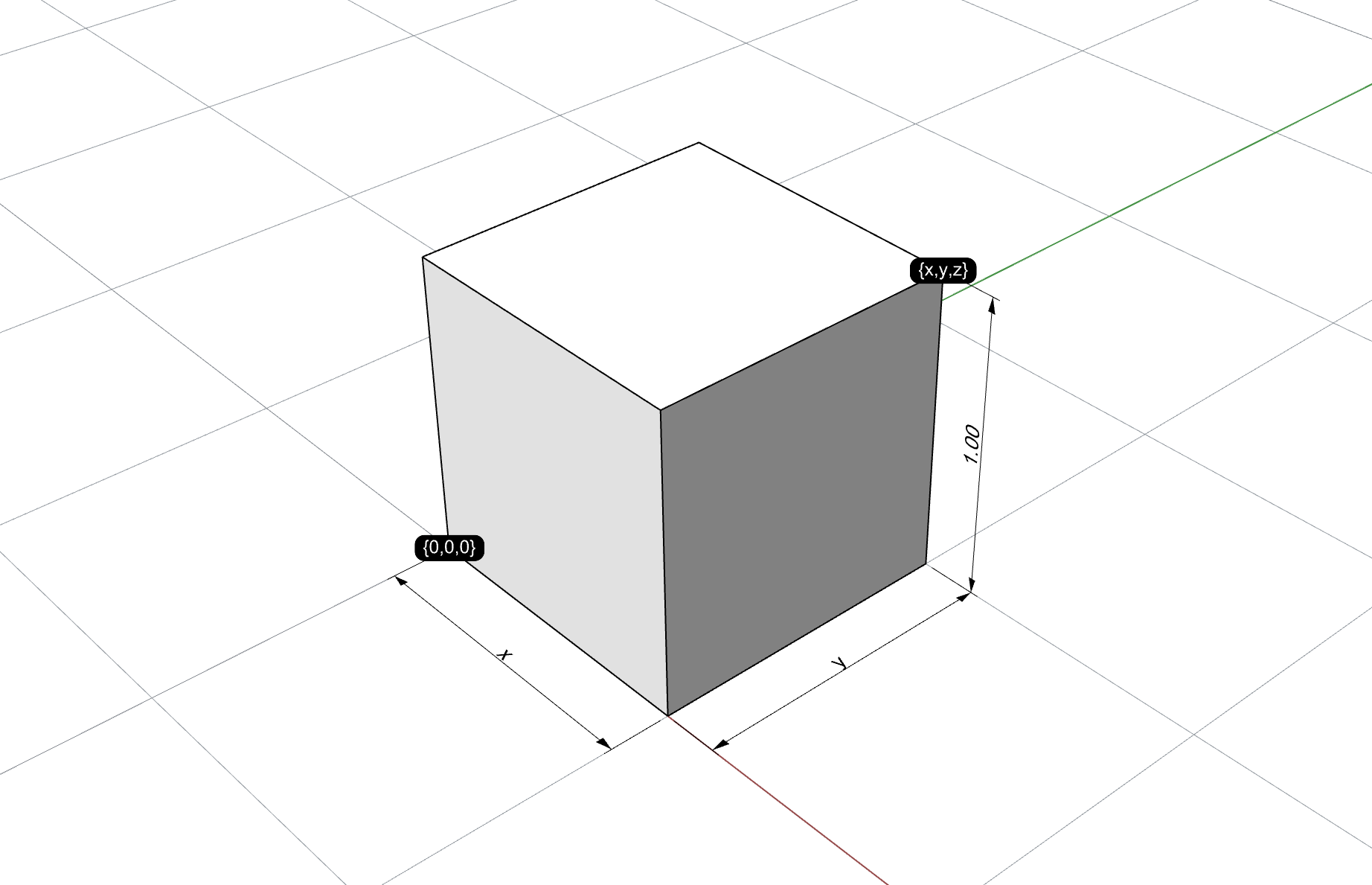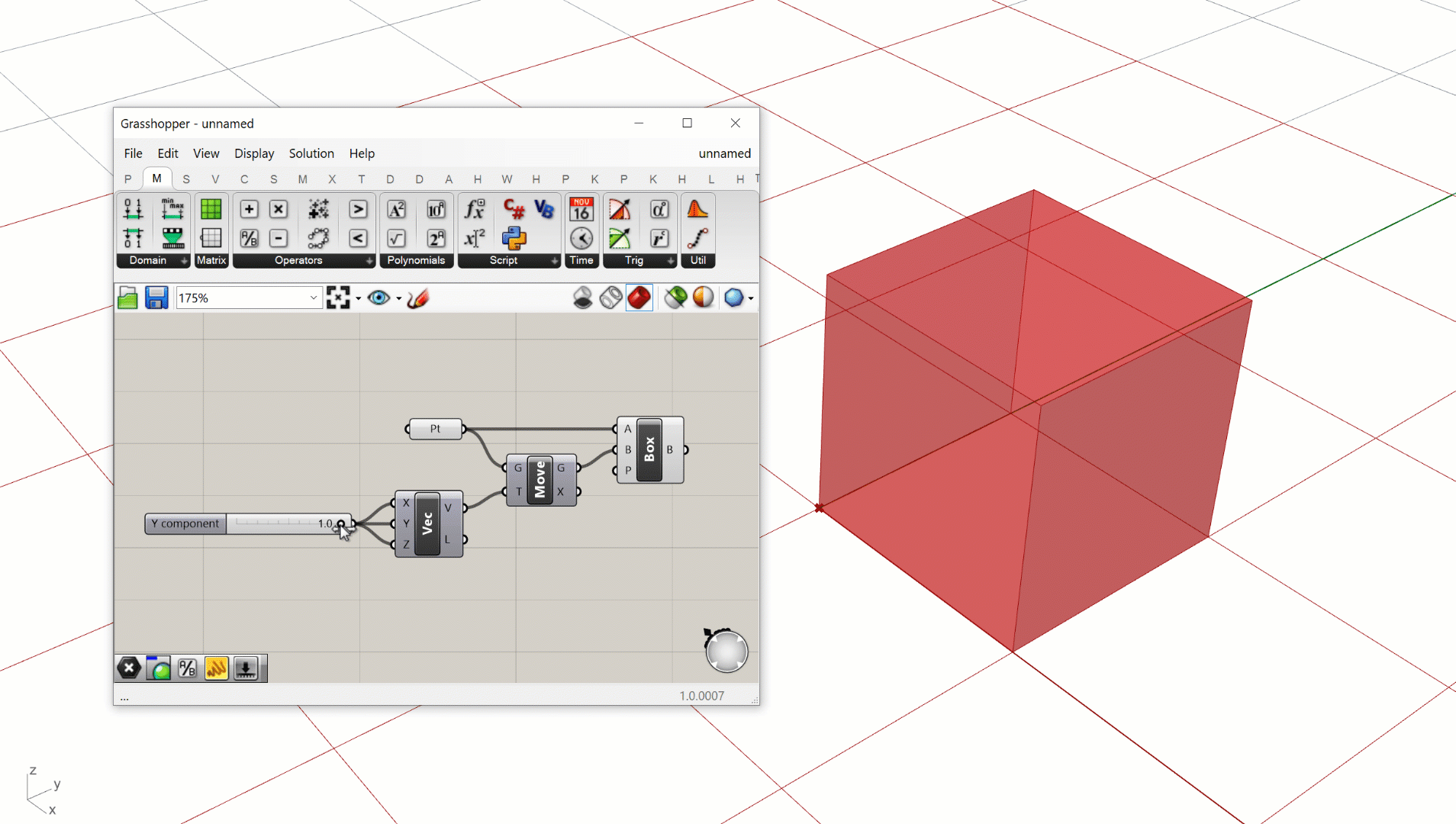Getting started with Grasshopper (2/3)
Designing with algorithms
When you first learned how to model geometry in a CAD software, you probably used a visual UI to perform many of the operations. For example, if you wanted to make a box, you would run the “box” command, which would give you a series of instructions to follow for making the box. First, you would click on a point in space to specify the first corner of the box, then click another point to specify the other corner of the base, and finally use your mouse to visually define the height of the box. This is a very visual and intuitive way of making geometry in the computer, and matches the traditional way of working with physical materials by hand to create form.

Box created in Rhino using the visual interface
If you wanted to be more precise about the geometry, you could start to enter exact values for some of the dimensions. For example, you could specify exact coordinates for the base point of the box. You could also use the desired width and length of the box to calculate the second corner point, and finally enter an exact height for the box. Now the box is precisely defined through data, without relying on any intuitive input. Most designers use a combination of these two methods: intuitive visual modeling for generating initial concepts, and then adjusting exact dimensions as the model is refined.

Box created in Rhino based on exact dimensions
When you work with computational models, you have to define everything about your design through data and functions, without relying on a visual UI. Creating form this way can be a challenge for many designers, since it requires not only knowledge of computational design tools such as Grasshopper, but good working knowledge of fundamental geometric concepts such as vector math and trigonometry, which are not typically taught as required courses in design schools. The goal of this course is to give you just enough background on these topics so you can get started with Grasshopper, and continue to develop your knowledge over time with more intermediate and advanced courses.

Box created in Grasshopper by defining a system of variables and operations
Computational Design Thinking
Once you get past the initial technical learning curves, true success with computational design relies not just on knowing the tools, but also in a change in how you think about design itself.
Traditionally, design was a highly intuitive and visual process, where the designer started with a base material and crafted it through a series of operations while getting direct visual feedback about what they were designing. With computational design, things are a bit different. Since computational design involves designing systems and not objects directly, there is not always the direct physical input or visual feedback to guide the process. Instead, computational design requires the designer to think of design problems systematically, break them down into smaller solvable parts, and then solve those smaller problems using the computational tools (such as Grasshopper) that they have at their disposal.
Because of its reliance on math and connection to computer programming, computational design is often thought of as more analytical and less intuitive than traditional design methods. However, there is still a large amount of intuition and creativity involved with designing computational models properly to ensure that they achieve the desired outcomes.
This change of mindset, or learning to think through design problems analytically and computationally, is often called Computational Design Thinking. This new way of thinking about design relies on learning some new technical tools such as computational geometry and visual programming, but it goes far beyond that. Learning the tools and techniques of computational design will not only make you a more skilled designer, but will give you a new way of thinking about design and your creative process.
The Grasshopper community
One of the best features of Grasshopper, and one of the key factors behind its success, is the amazing community of designers and programmers that’s grown around it.
Designing computationally can be a very challenging and creative process. When you are building something totally new there are not always standard answers out there for how to solve the problems you might run into. In such cases it is useful to have a strong community of fellow users who can share experiences and help each other to overcome challenges in a collaborative way.
Because of its connection with computer programming, computational design inherits a lot of the community and open-source culture of the software development industry. A great way to get to engage with the Grasshopper community is by visiting the Grasshopper forum: https://discourse.mcneel.com/c/grasshopper-developer.
At this point, Grasshopper is old enough and the community of users is large enough that you can usually Google “Grasshopper + whatever your issue is” and get results from the Grasshopper forum (or occasionally private blogs or video tutorials) discussing the same issue.